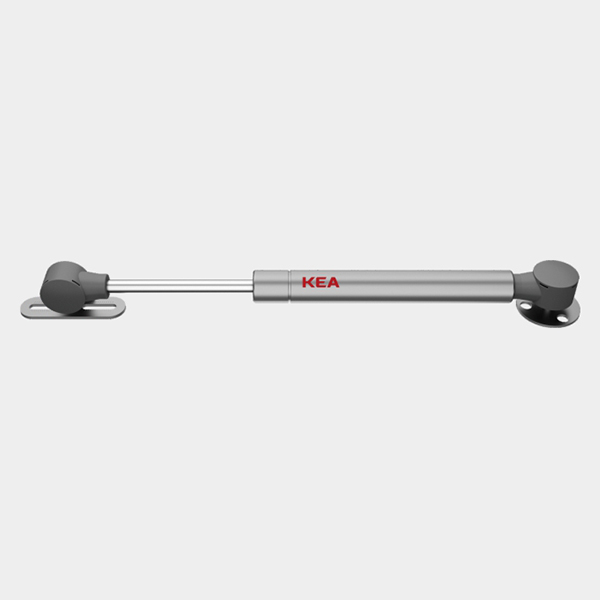In the world of modern cabinetry, functionality and ease of use are as important as aesthetic appeal. One innovative feature that has gained popularity in recent years is the use of gas springs in cabinets. These devices offer a range of benefits, from smoother operation to enhanced durability, making them an excellent upgrade for any kitchen or storage area. This passage will explore everything you need to know about upgrading your cabinets with gas springs, including their benefits, how they work, and tips for installation and maintenance.
What Are Cabinet Gas Springs?
Gas springs, also known as gas struts or gas shocks, are devices that use compressed gas to exert a force. They are commonly used in automotive applications, such as lifting car hoods and trunk lids, but their use in cabinetry has grown due to the advantages they offer. In cabinets, gas springs are typically installed to assist in the opening and closing of doors, lids, or drawers, providing a smooth, controlled motion.
Benefits of Using Gas Springs in Cabinets
Smooth and Controlled Operation
One of the most significant advantages of gas spring for kitchen cabinet is the smooth and controlled operation they provide. Unlike traditional hinges, which rely solely on mechanical friction, gas springs use compressed gas to regulate the speed and force of the movement. This results in a gentle, steady motion that prevents doors from slamming shut, reducing noise and potential damage to the cabinets.
Enhanced Durability
Gas springs help distribute the weight of the cabinet doors more evenly, reducing the strain on hinges and other hardware. This even distribution of weight extends the lifespan of both the gas springs and the cabinets themselves, making them a worthwhile investment for long-term durability.
Improved Accessibility
Cabinets equipped with gas springs are easier to open and close, which is particularly beneficial in kitchens where hands are often full or dirty. The added convenience can make a significant difference in the usability of your kitchen, making daily tasks more efficient and enjoyable.
Safety Features
Gas springs provide a controlled motion that reduces the risk of injuries caused by slamming doors or lids. This is especially important in households with young children or elderly family members, where safety is a primary concern. The gentle closing action ensures that fingers are less likely to be caught in closing doors.
Modern Aesthetic
The sleek design and smooth operation of gas springs add a modern touch to any kitchen or storage space. Their concealed mechanism contributes to a clean and uncluttered look, enhancing the overall aesthetic appeal of your cabinetry.
How Gas Springs Work
Gas springs operate using a combination of mechanical and pneumatic principles. Inside the gas spring, a piston is housed within a cylinder filled with compressed gas, usually nitrogen. When the cabinet door is opened, the gas compresses, storing energy. As the door is closed, the gas expands, releasing the stored energy and providing a controlled, cushioned motion. The pressure of the gas and the size of the piston determine the force exerted by the gas spring, which can be customized to suit different cabinet sizes and weights.
Installation Tips
Upgrading your cabinets with gas springs can be a straightforward process, but it requires some attention to detail to ensure optimal performance. Here are some tips for installing gas springs in your cabinets:
1. Choose the Right Gas Springs
Selecting the appropriate gas springs for your cabinets is crucial. Consider factors such as the weight and size of the doors, the desired opening angle, and the mounting position. Manufacturers typically provide specifications and guidelines to help you choose the right product for your needs.
2. Accurate Measurements
Precise measurements are essential for proper installation. Measure the distance between the mounting points on the cabinet and the door, ensuring that the gas spring will provide the desired range of motion. Incorrect measurements can lead to improper operation and reduced effectiveness.
3. Secure Mounting
Ensure that the mounting points on both the cabinet and the door are strong enough to support the gas spring. Use appropriate screws and brackets to secure the gas spring in place, following the manufacturer's instructions. Loose or weak mounting points can compromise the stability and functionality of the gas spring.
4. Test the Operation
After installation, test the operation of the gas springs by opening and closing the cabinet doors several times. Ensure that the motion is smooth and controlled, and make any necessary adjustments to the mounting points or the gas spring itself. It may take some trial and error to achieve the perfect balance.
Conclusion
Upgrading your cabinets with gas springs is a smart and practical enhancement that offers numerous benefits. From smooth and controlled operation to enhanced durability and safety, gas springs can transform the functionality and aesthetics of your kitchen or storage space. By choosing the right gas springs, following proper installation techniques, and maintaining them regularly, you can enjoy the advantages of this innovative technology for years to come.
